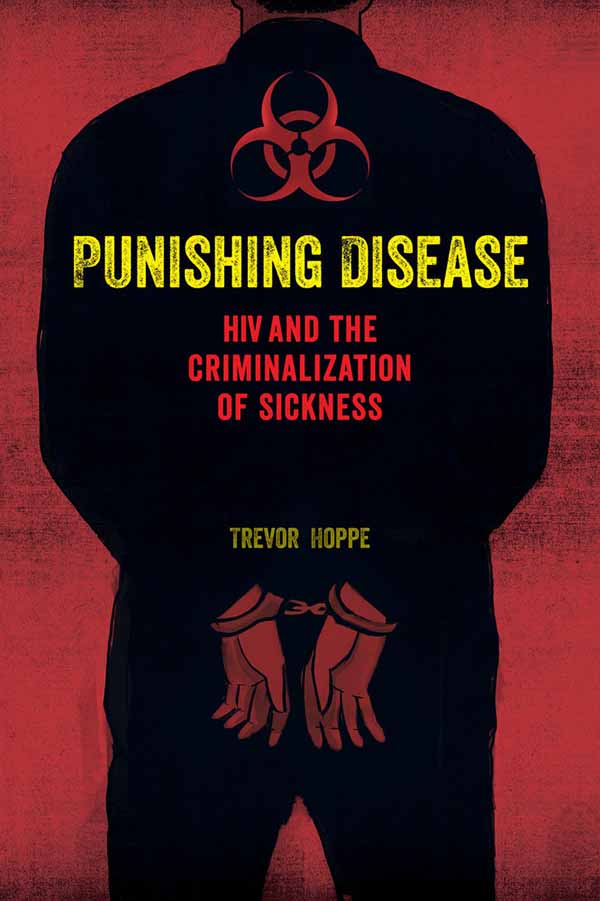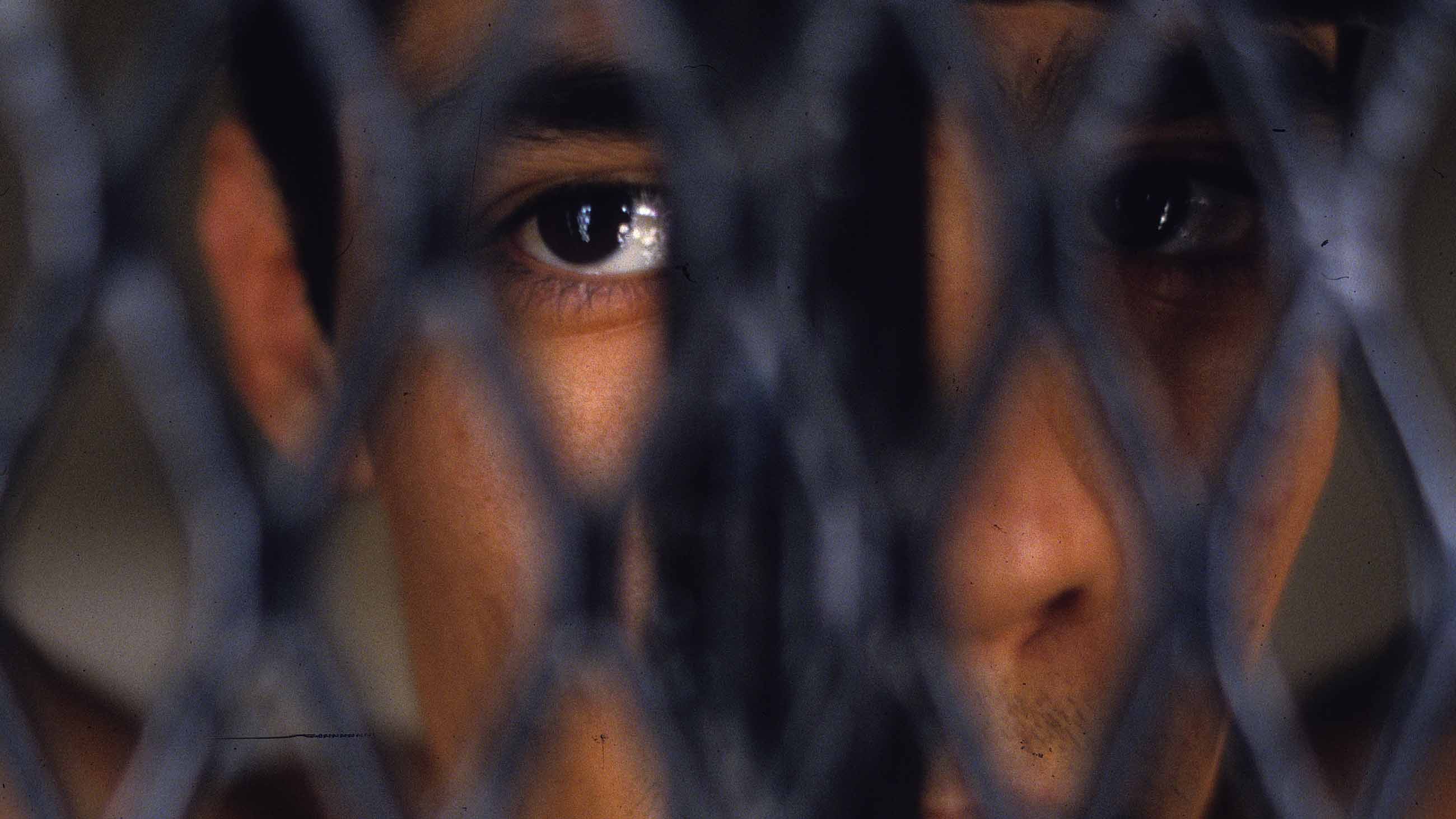California has long been at the vanguard of public health initiatives that were once derided as wrongheaded but are now considered mainstream: auto emissions tests, clean air and anti-smoking laws, bike helmet regulations, medical marijuana. But there’s at least one policy the state has had great cause to regret.

BOOK REVIEW — “Punishing Disease: HIV and the Criminalization of Sickness,” by Trevor Hoppe (University of California Press, 275 pages).
In the mid-1980s, the HIV/AIDS epidemic was sweeping through major cities like a scythe, with no end or cure in sight. An HIV diagnosis was considered a death sentence. As Trevor Hoppe recounts in the new book “Punishing Disease,” the public mood was both fearful and vengeful:
In the face [of] failed prosecutions, media outlets demanded that legislators introduce HIV-specific laws. An Orlando Sentinel editorial specifically argued that stiff penalties were necessary to discourage “case by case experimenting” in which authorities “dream up novel ways to prosecute today’s version of Typhoid Mary.” But nowhere in the country was the discussion as heated as in California, where conservative extremist Lyndon LaRouche had stoked the fears of Americans through repeated ballot initiatives aimed at restricting the civil rights of all people living with HIV. In a 1987 editorial entitled “There Ought to Be a Law,” [the] Daily News of Los Angeles staff wrote that “it is time for Sacramento to exercise the political will needed to prevent unstable AIDS victims from passing a death sentence to others.”
California was hardly alone in responding to the epidemic with punitive statutes. At least 30 other states eventually passed laws criminalizing the potential exposure to HIV. (Most of these laws, including California’s, did not require actual transmission of the virus.) California’s law was particularly harsh. Exposing an unknowing person to the virus was made a felony, punishable by up to eight years in prison. People living with HIV could “be subject to a longer potential sentence than for certain types of manslaughter,” according to Lambda Legal, the civil rights and legal advocacy group.
“Punishing Disease” is a meticulously researched history of how punishment came to be perceived as a “legitimate disease control strategy” in response to the HIV epidemic. Neatly organized in two sections — one on public health, one on criminal justice — the book is further divided into six chapters, each about a different social problem. It begins with the outbreaks of tuberculosis and typhoid in early-20th-century urban America, quoting firsthand accounts of the heavy-handed quarantine tactics used to fight them. The book ends with a pioneering demographic analysis showing which communities are most affected by HIV criminalization laws.
Hoppe, a sociologist at the University at Albany, State University of New York, has already established himself as a scholar of sexuality, medicine, and the law. In addition to “Punishing Disease,” he was co-editor of the 2017 essay collection “The War on Sex,” with David M. Halperin, the well-known theorist of sexuality, gender theory, literature, and critical studies at the University of Michigan (and formerly at MIT). Hoppe completed his doctorate at Michigan, where his research found that heterosexual African-American men are disproportionately convicted under that state’s HIV disclosure law.
“Punishing Disease” argues that HIV presents a unique experience in our history because “no disease has been met with a singularly systemic campaign to criminalize people living with infectious disease.” HIV was so feared in the 1980s, Hoppe writes, because no one knew what it was or how to treat it. The first cases were reported in June 1981. Researchers eventually discovered the human immunodeficiency virus in 1983. Isolating the virus led to developing a diagnostic test two years later. During those years, cases were largely untreatable and often terminal.
New Jersey became the first state to criminalize HIV exposure in 1985. More than a dozen states, including California, followed suit by 1988 with laws to punish exposure or transmission, according to Hoppe’s research. These laws were introduced after several high-profile failures to convict people living with HIV under traditional felony statutes such as attempted murder or assault; police, prosecutors, and media outlets were frustrated and demanding harsher, HIV-specific laws.
The criminalization of HIV was accompanied by the rise of mass incarceration, an escalating “war on drugs” that began during the Nixon administration, and the racialized backlash against gains made by African-Americans during the civil rights era. Hoppe, like many other scholars, calls attention to the racialization of the Reagan-era drug war, its “focus on a drug that was disproportionately used by poor black Americans: crack cocaine,” the harsher sentencing guidelines that targeted those users, and the resulting significant racial disparities in policing, courts, and corrections. All played into the injustices wrought by state HIV criminalization laws.
The book’s sixth and final chapter examines racial and gender disparities in HIV-specific convictions and sentencing, presenting a first-of-its-kind dataset that includes convictions under HIV-specific criminal laws in six states — Arkansas, Florida, Louisiana, Michigan, Missouri, and Tennessee. The findings are striking: Heterosexual male defendants are disproportionately convicted; African-American men receive longer and harsher prison sentences; Men accused of not disclosing to women “were sentenced to prison terms roughly a year longer than their [gay] counterparts,” in the three states — Michigan, Missouri, and Tennessee — where data was available. (One of these data sets, on racial disparities in sentencing, was reported in Undark last August in my Convictions column about Hoppe’s presentation at the 2016 AIDS conference in Durban, South Africa.)
Much has changed, of course, since the nightmarish 1980s. Powerful antiretroviral therapies (ARVs), introduced in 1996, have revolutionized treatment outcomes, saving millions of lives. These treatments mean that people living with HIV have a chronic but manageable condition — like asthma or diabetes — and can live long, healthy, and productive lives. Daily adherence to an ARV regimen makes it extremely unlikely, if not virtually impossible, to transmit HIV to a sexual partner, studies have demonstrated.
Last fall, California finally repealed the misguided felony provision of its HIV law. The new law, SB 239, signed by Gov. Jerry Brown in October, makes deliberate intent to expose — which very rarely happens, according to most experts — a misdemeanor. It incorporates the current evidence-based science concerning the virus and notes that “use of a condom, barrier protection of prophylactic device, or good faith compliance with a medical treatment regimen for the infectious or communicable disease prescribed by a health officer or physician” demonstrates a “practical means to prevent transmission.” The legislation was supported by Republicans and Democrats, public health officials, medical professionals, legal scholars, civil rights advocates, and leading newspapers such as The San Francisco Chronicle. It’s an encouraging development, though as Jessica Wapner reported in detail for Undark in August 2016, there is still much to be done in other states.
“Punishing Disease” — engagingly written and accessible to non-scientific and non-academic audiences — impressively deploys the tools of sociology, criminology, and epidemiology to help us understand the baleful consequences of reacting to a public health emergency with punishment instead of compassion.
Rod McCullom, the Convictions columnist for Undark, reports on the intersection of science, technology, crime, race, and poverty. He has written for ABC News, The Atlantic, The Nation, and Scientific American, among others. In 2015-2016, he was a Knight Science Journalism fellow at MIT.











Comments are automatically closed one year after article publication. Archived comments are below.
You are naive to believe that hiv is a manageable disease. Does juggling stage 3 kidney failure, avascular necrosis, peripheral neuropathy, fatigue, depression and anxiety sound manageable?